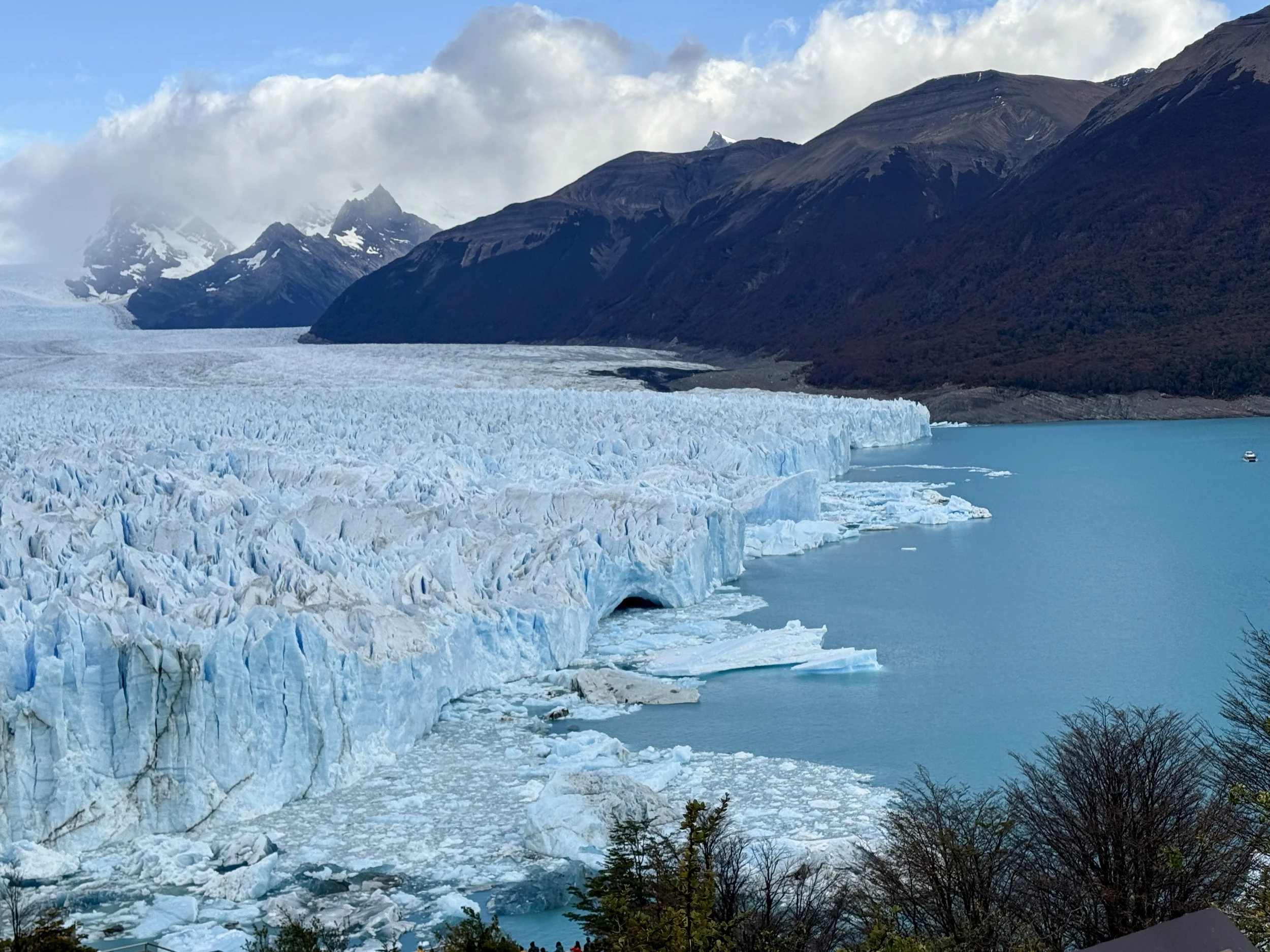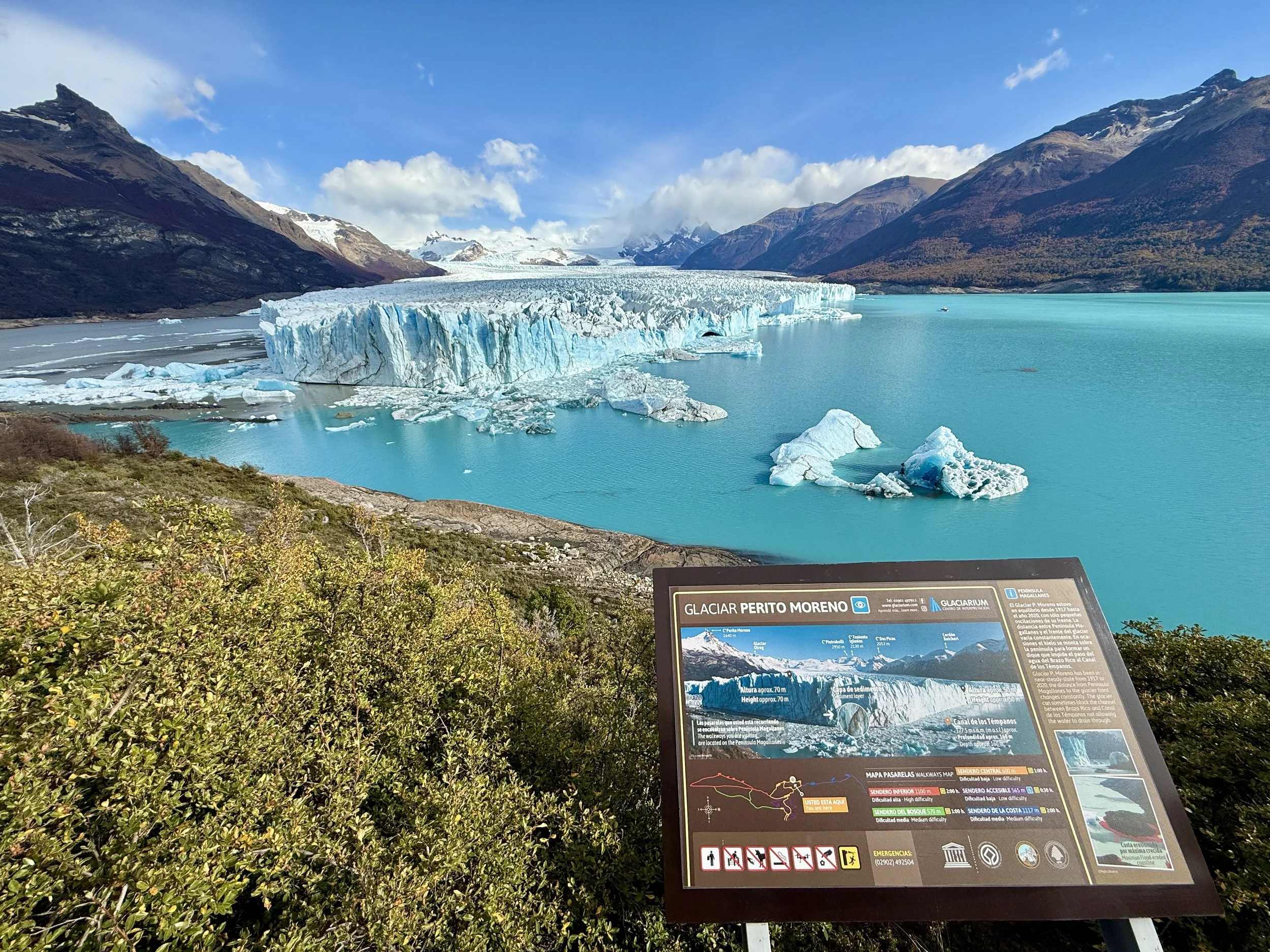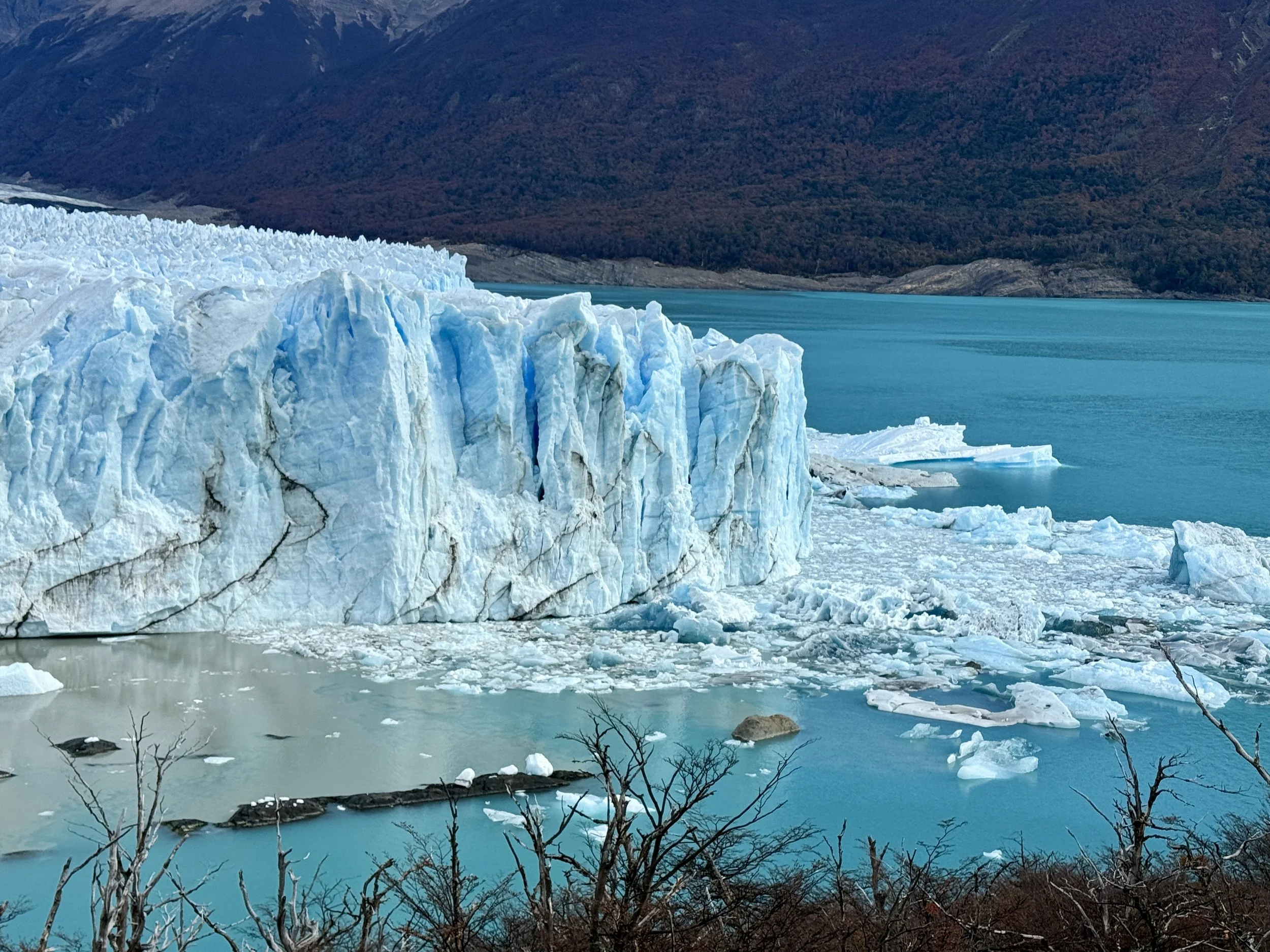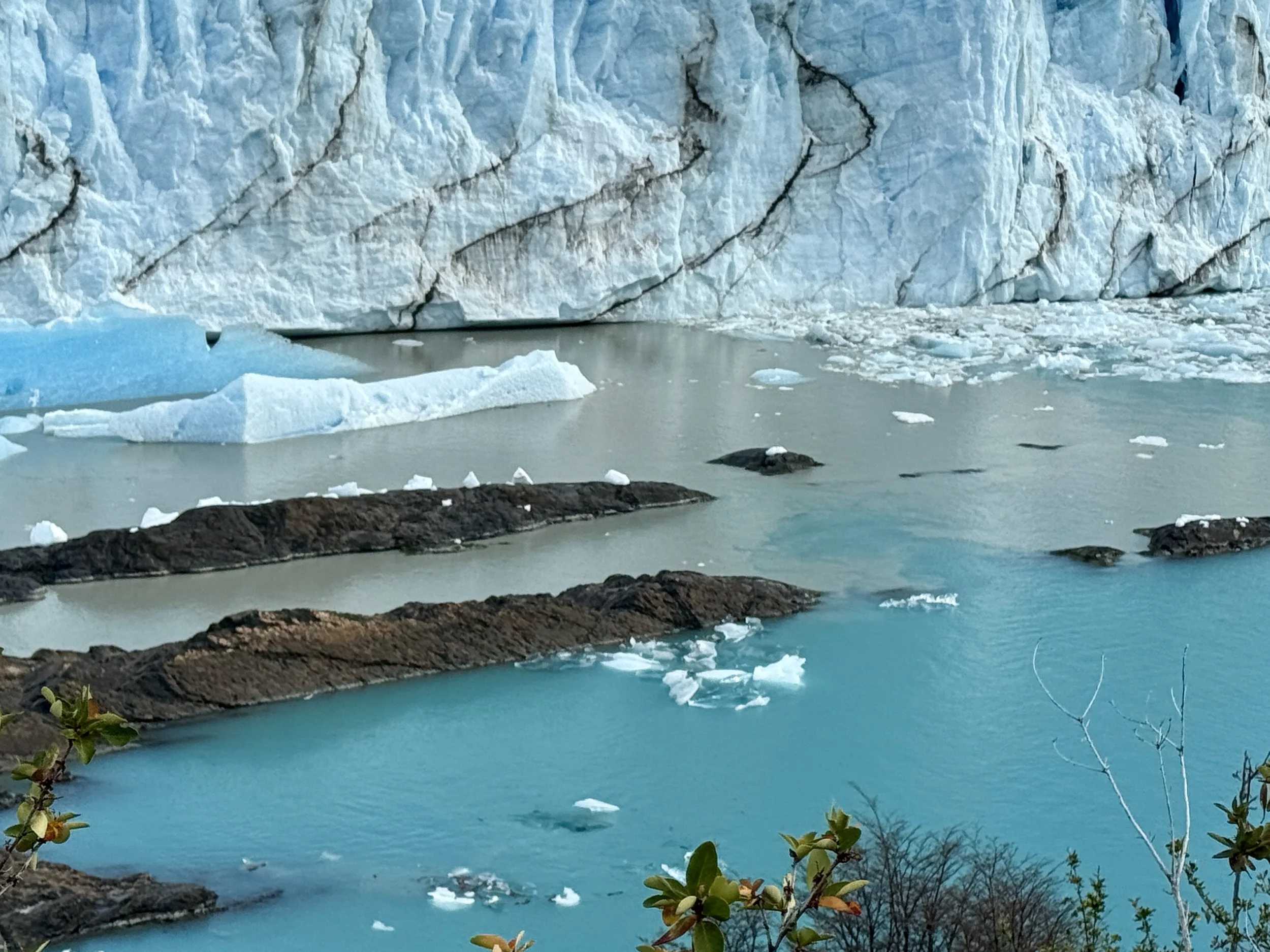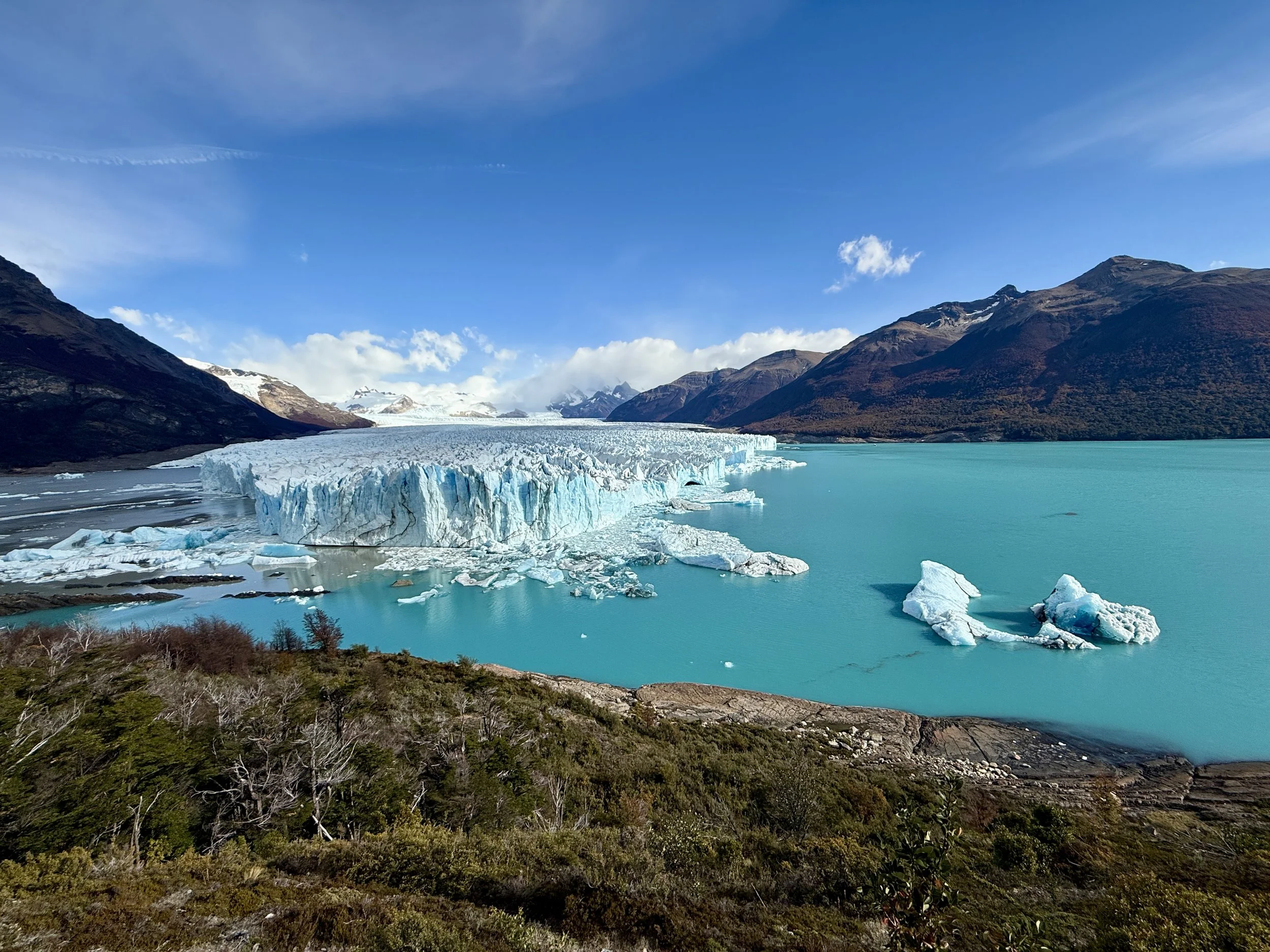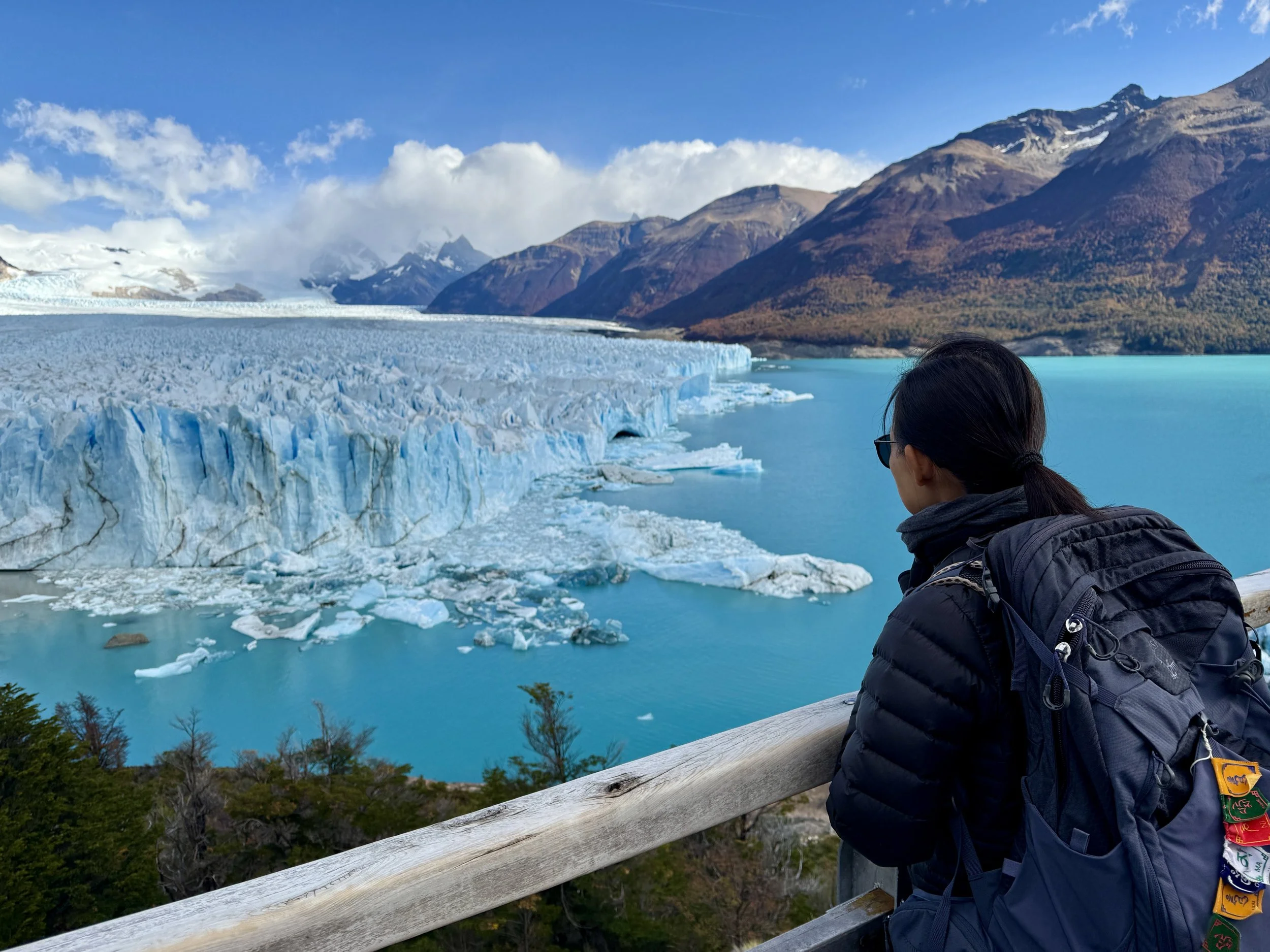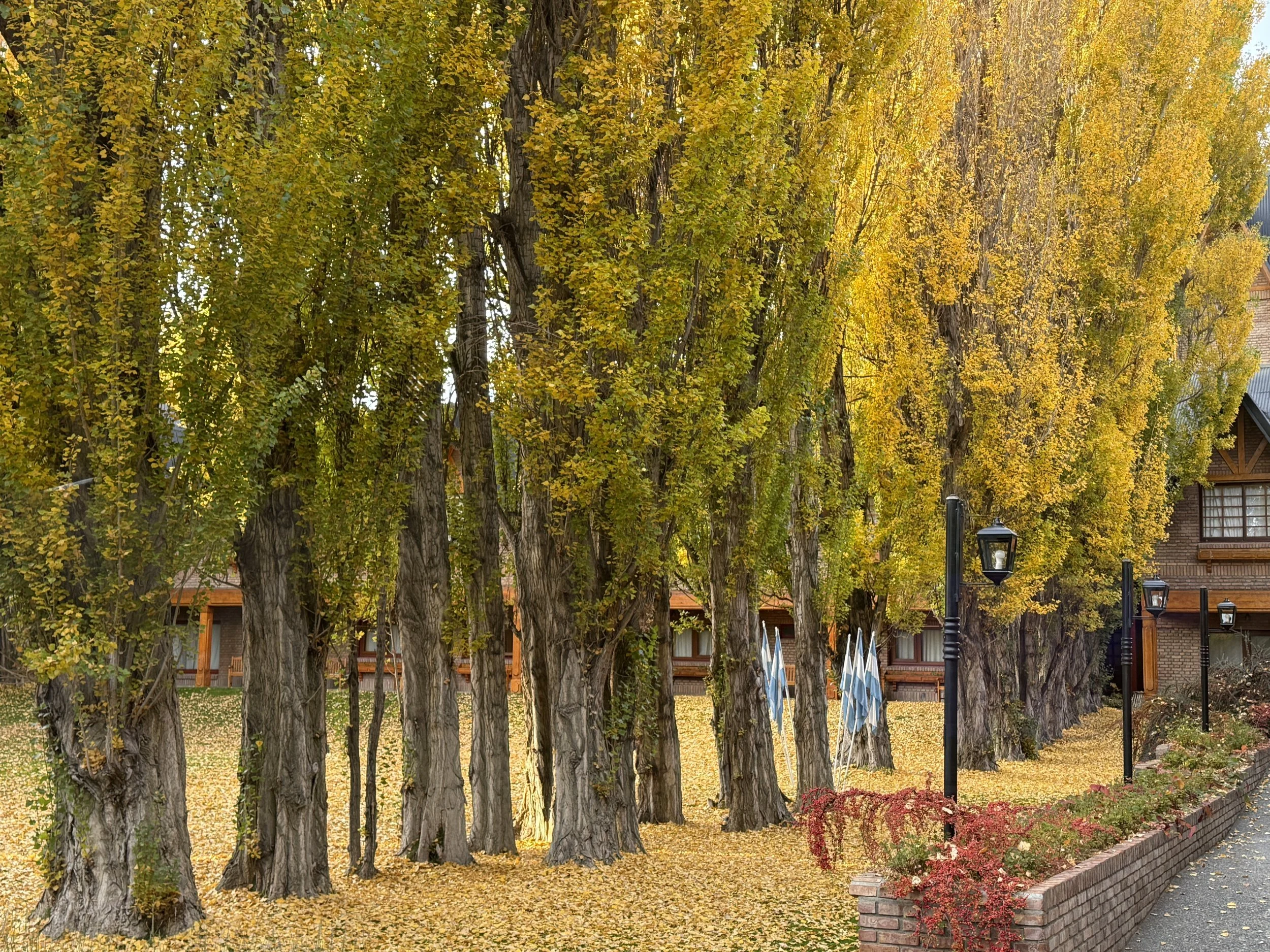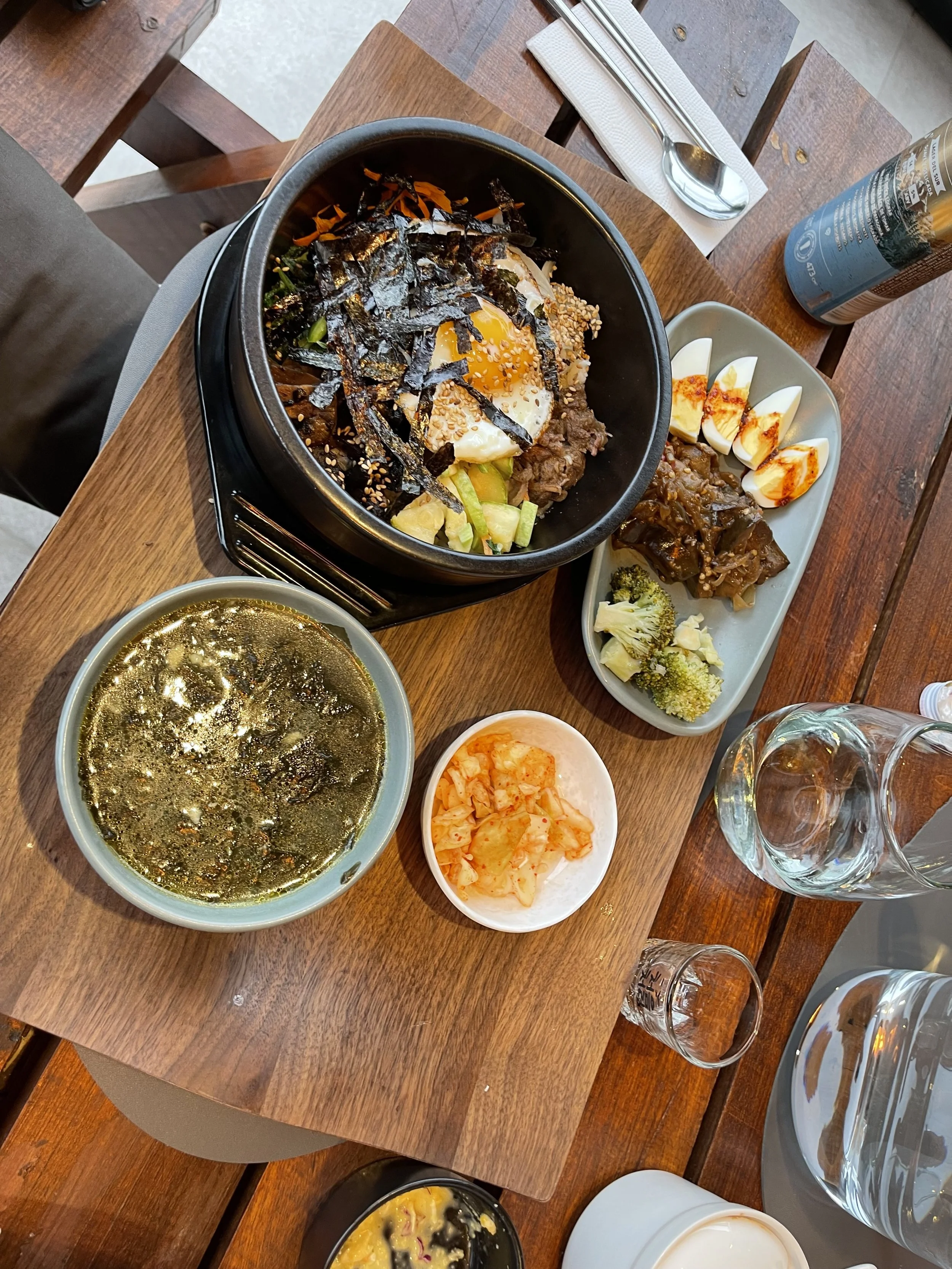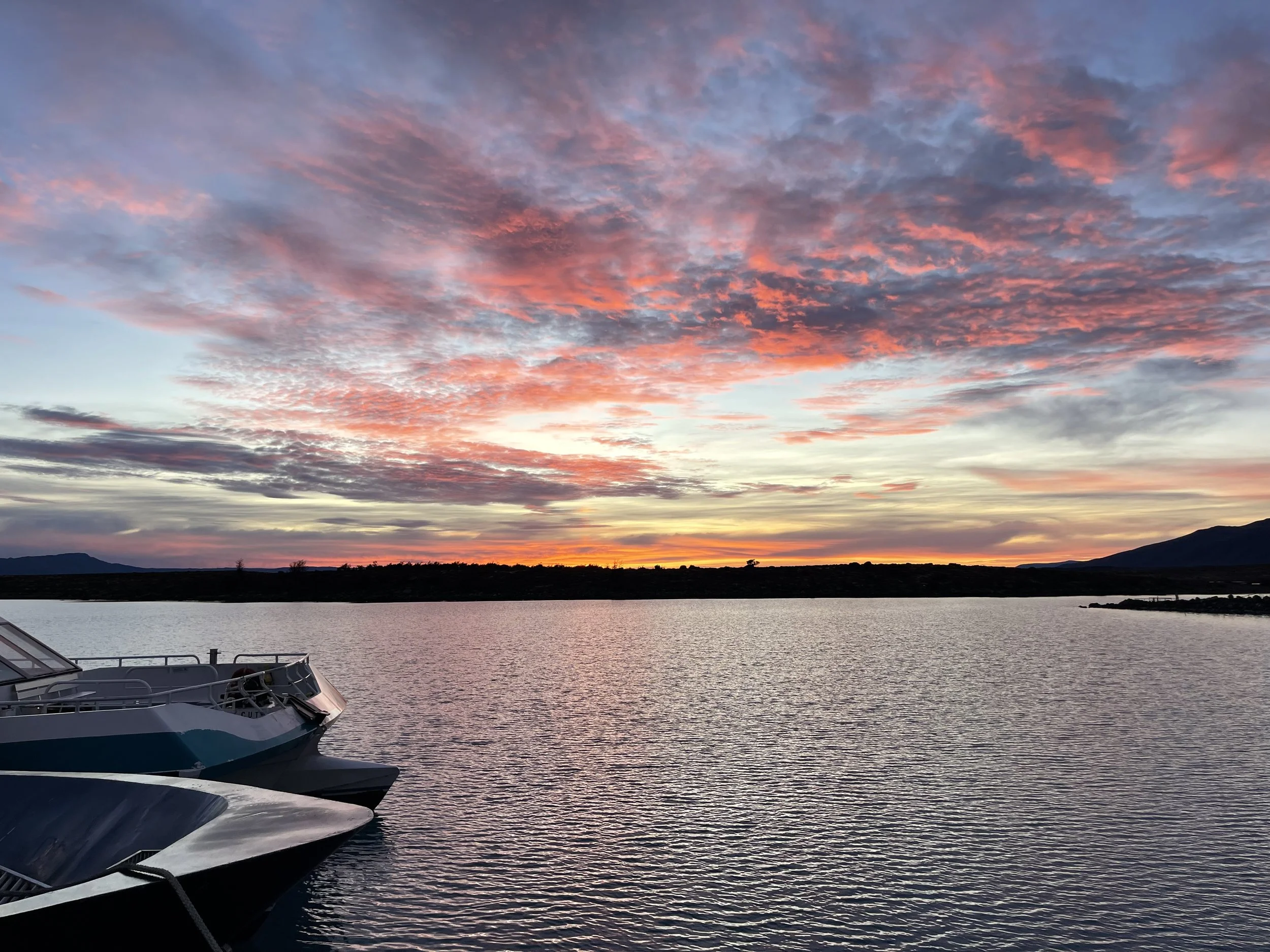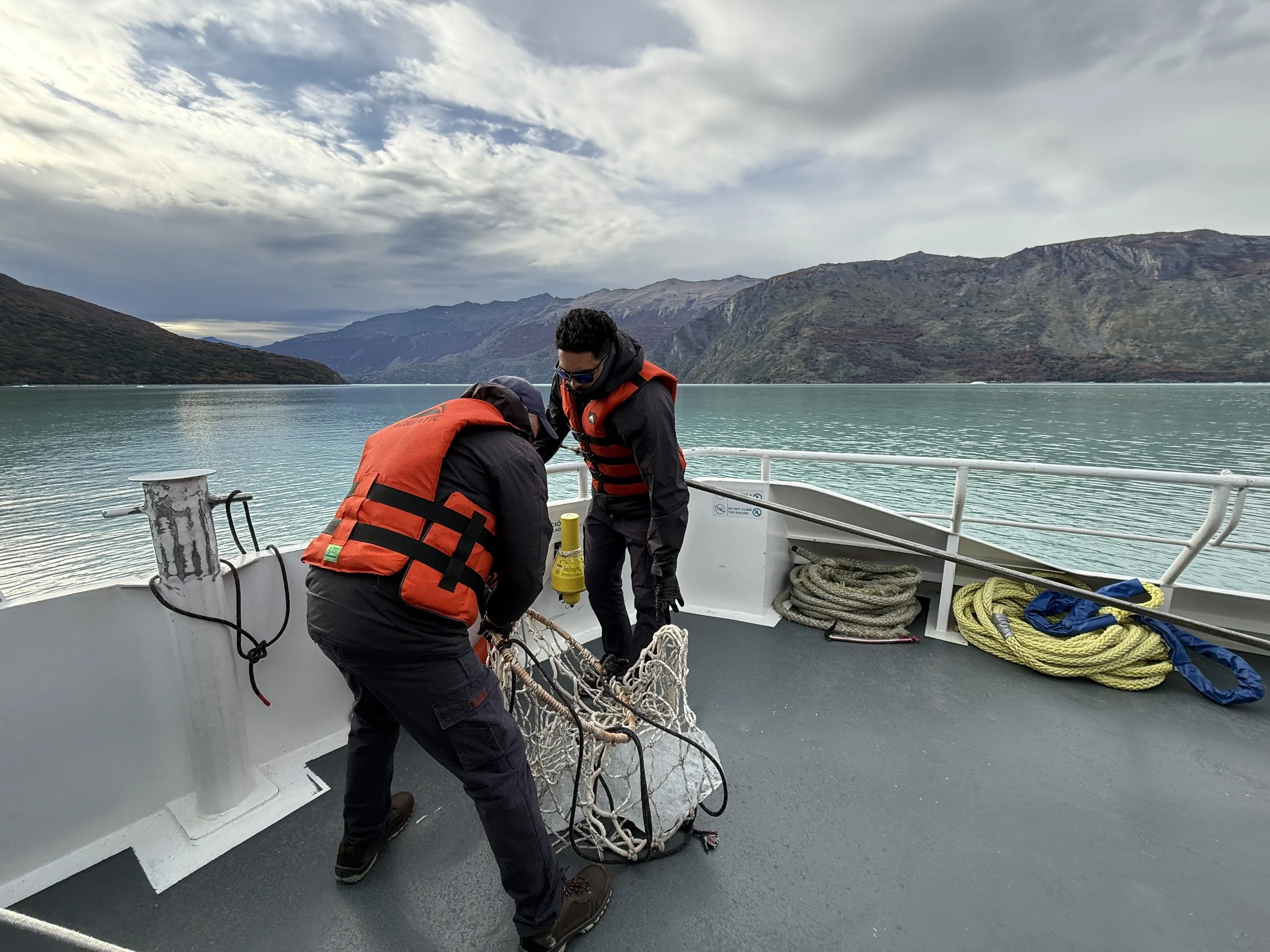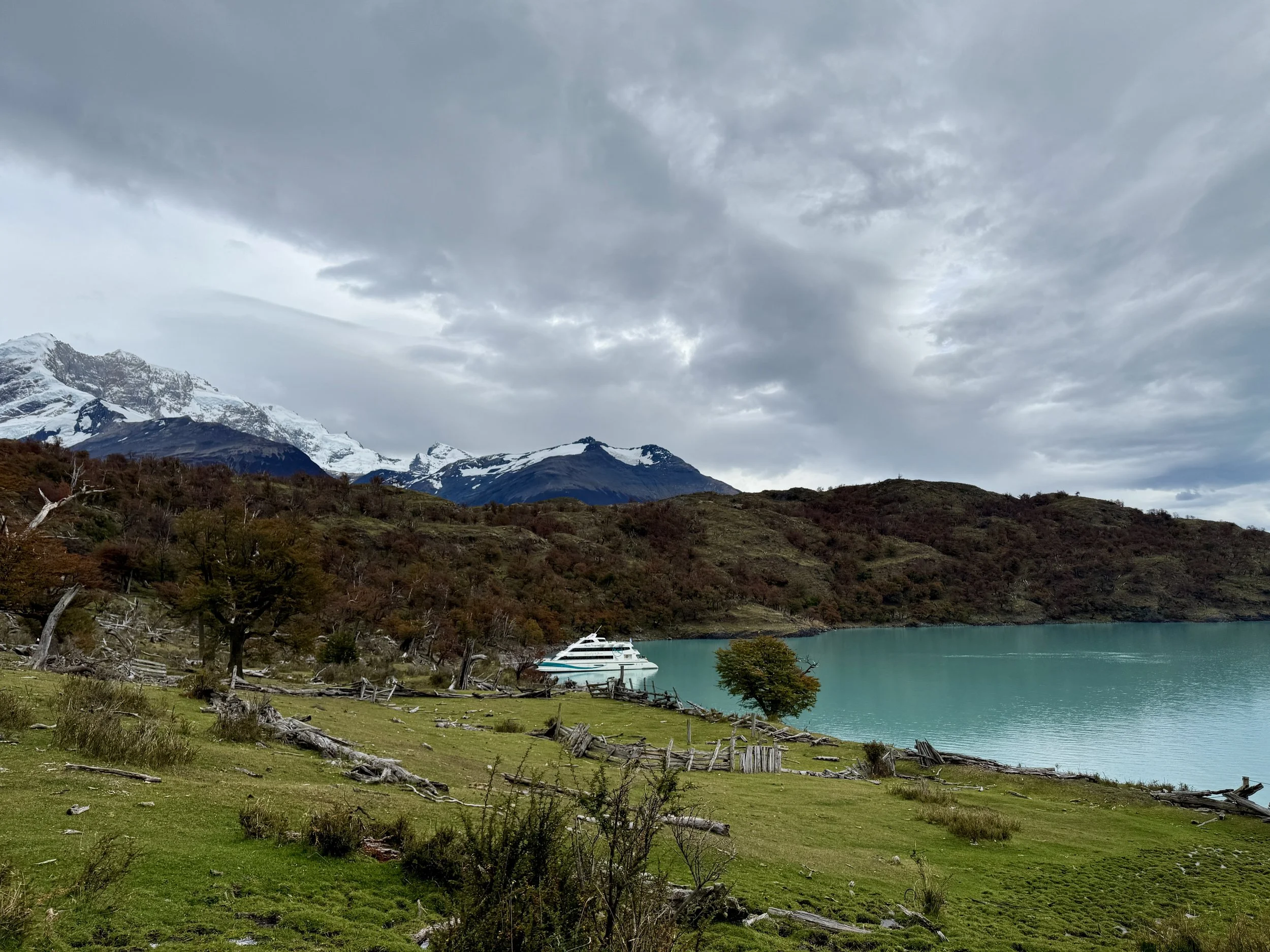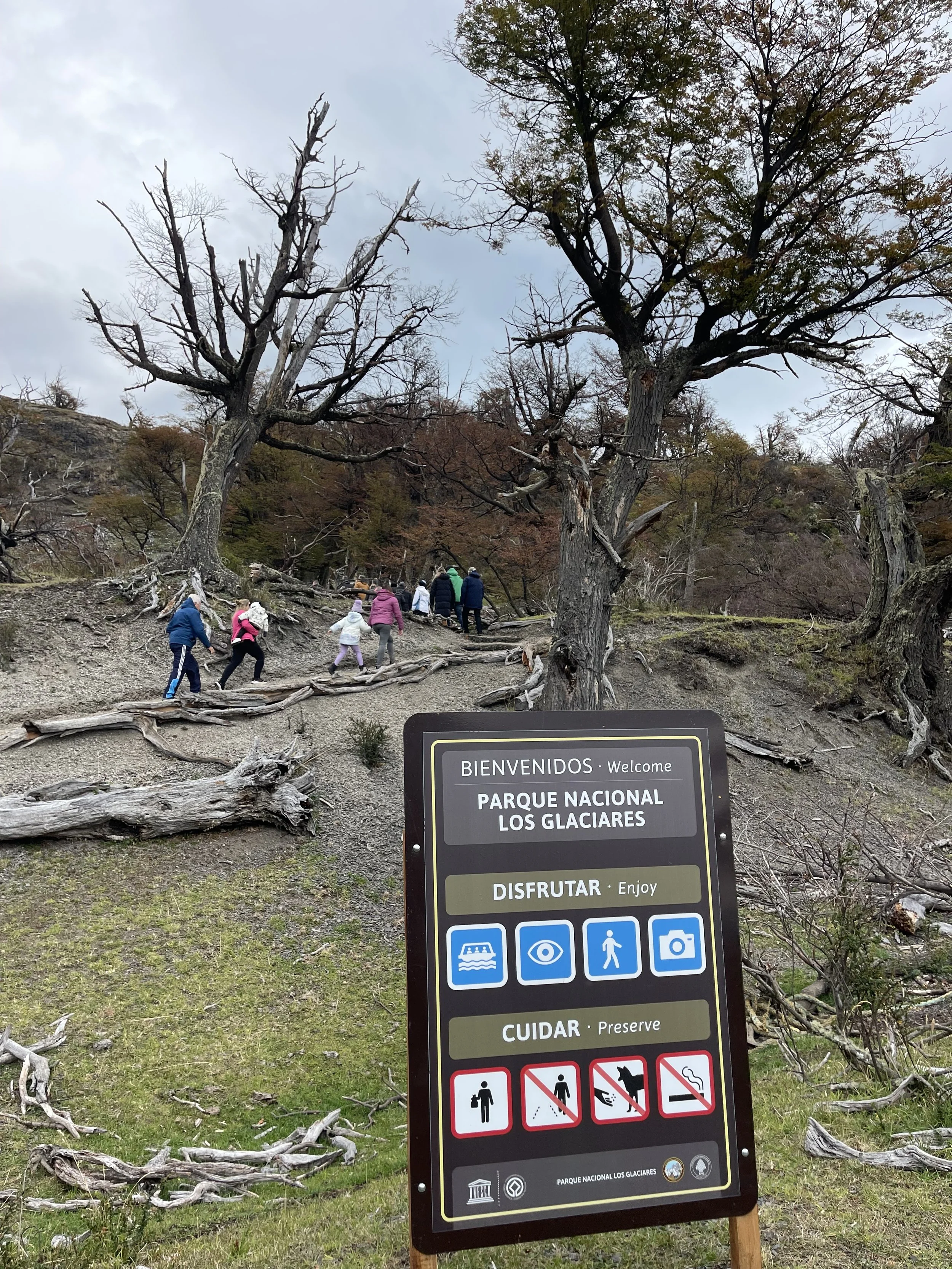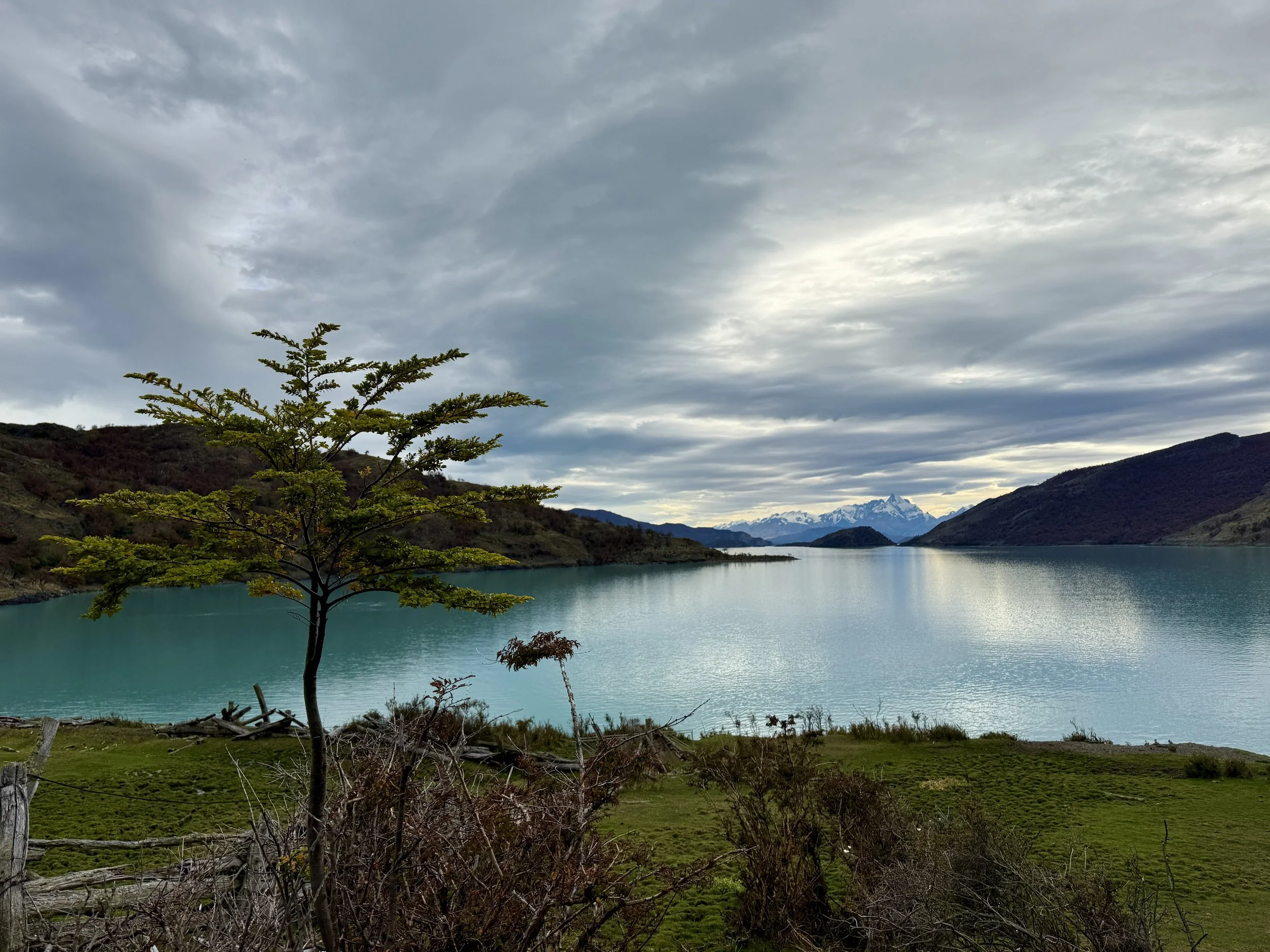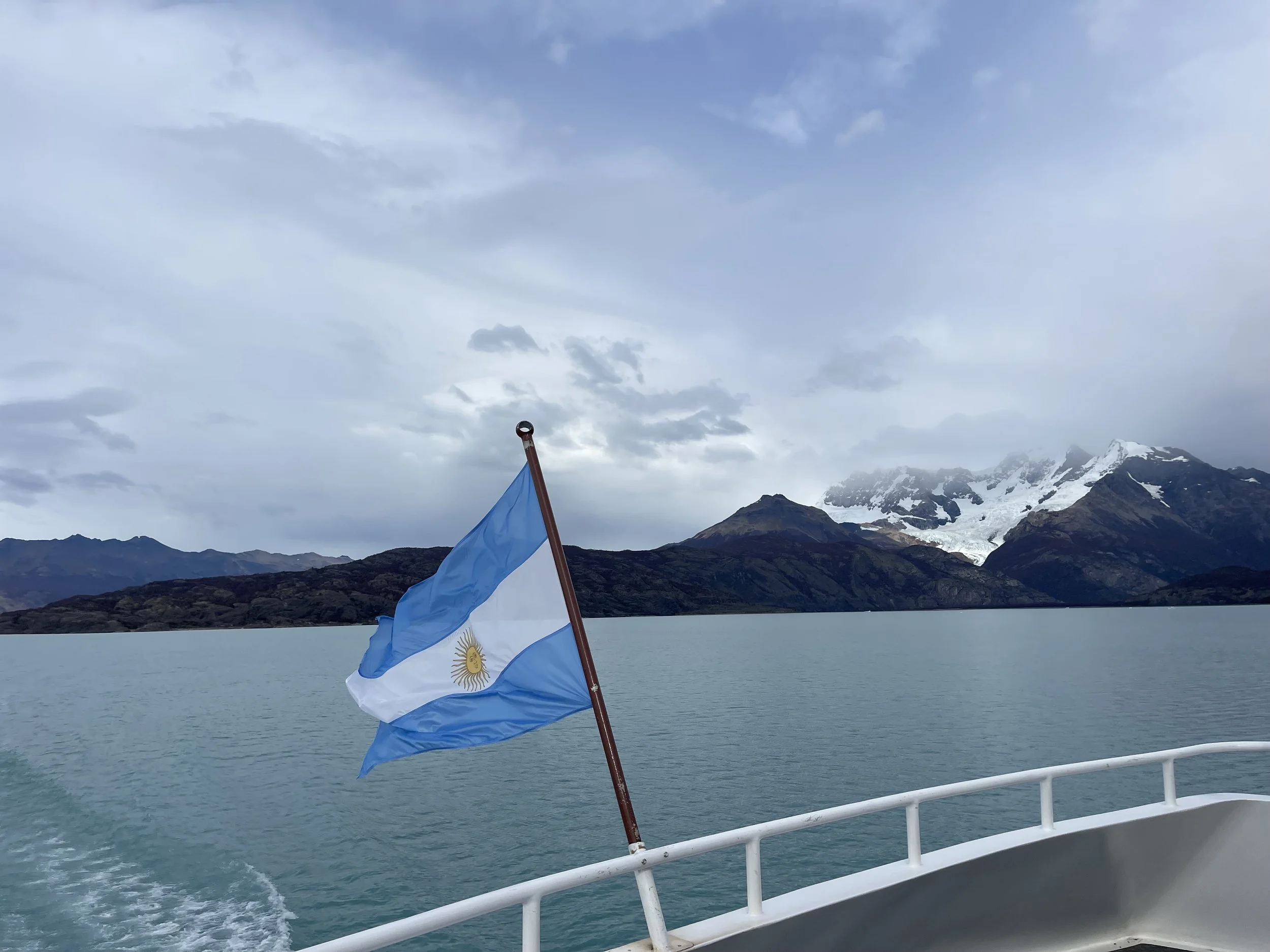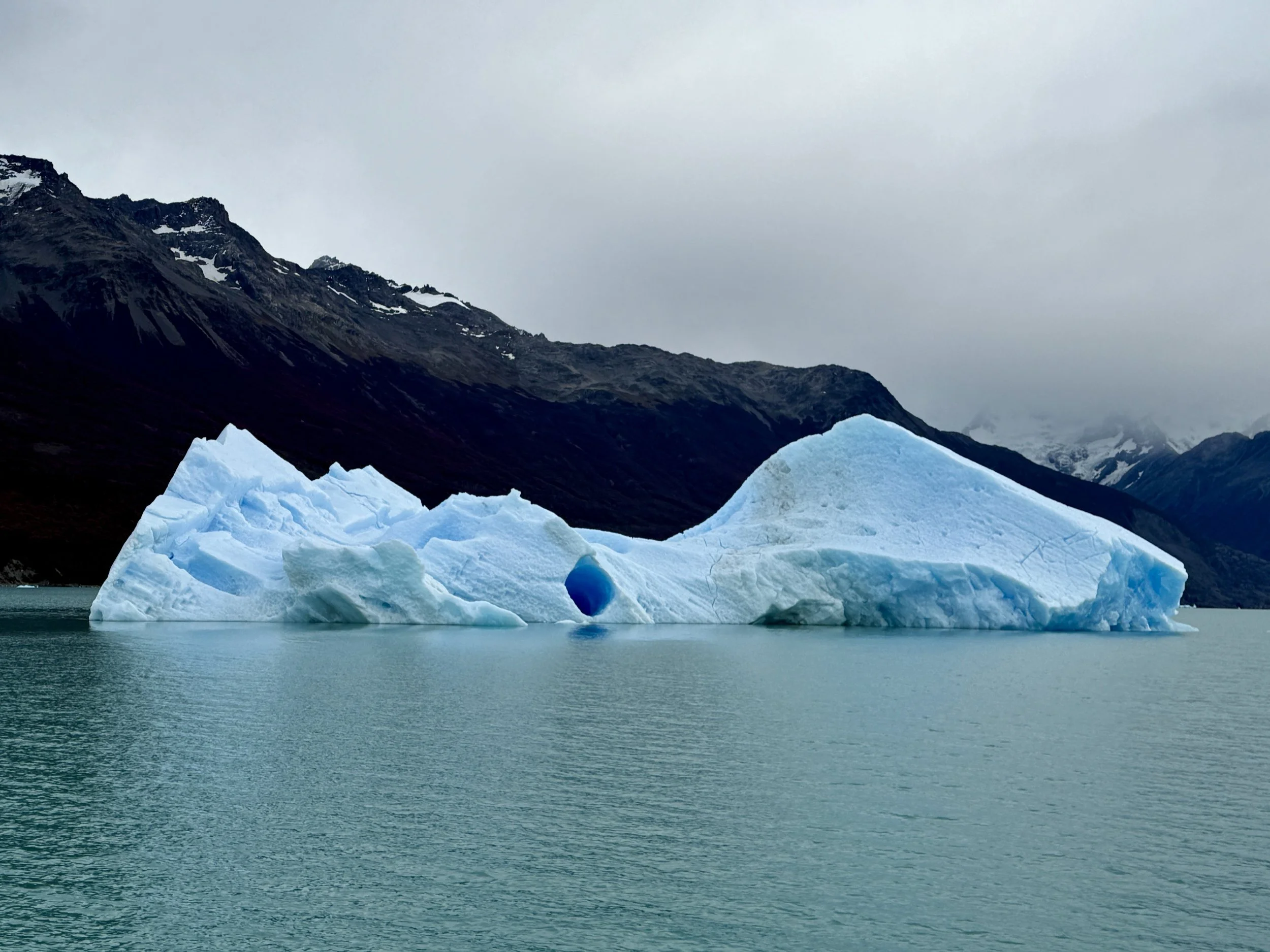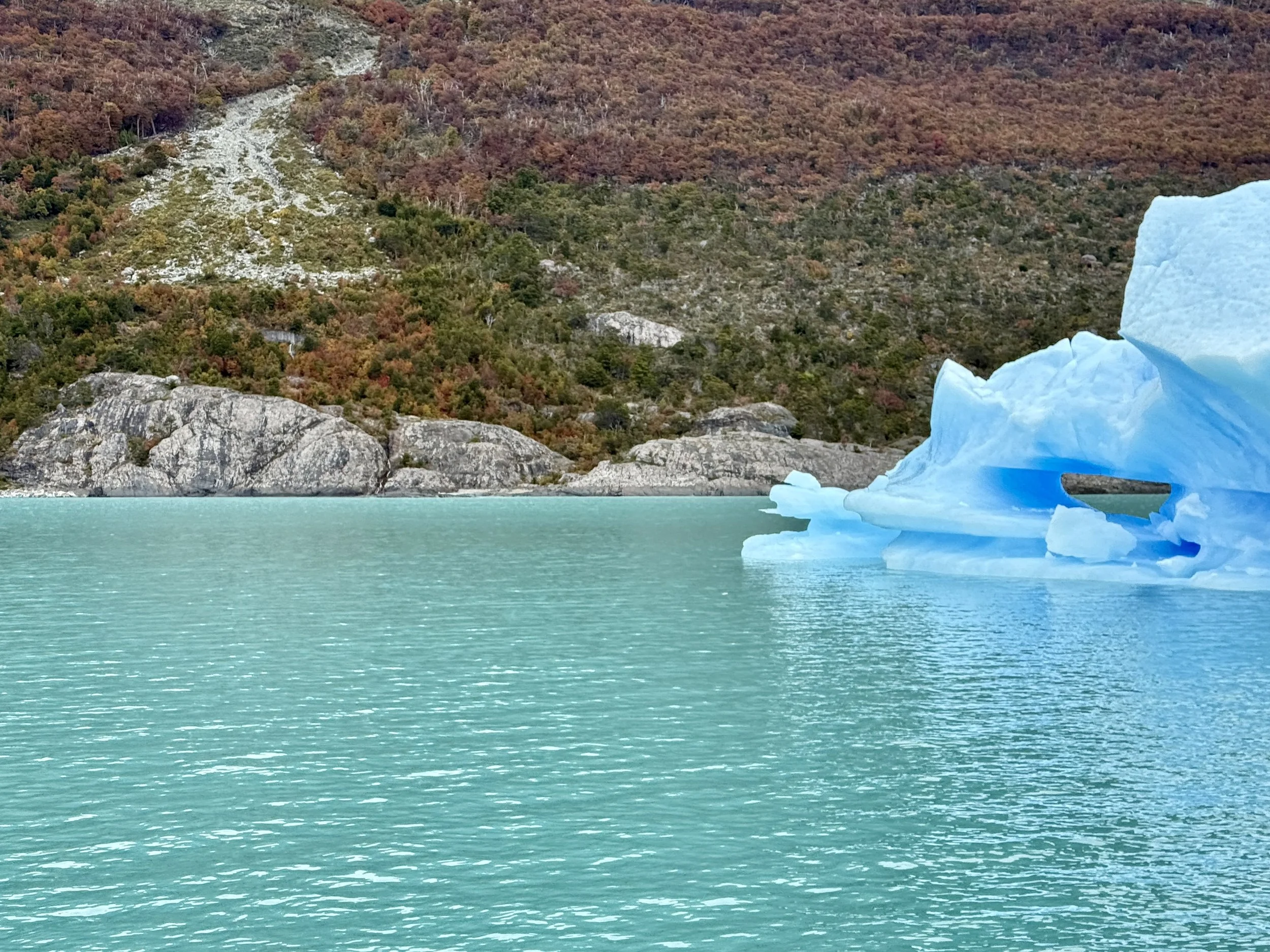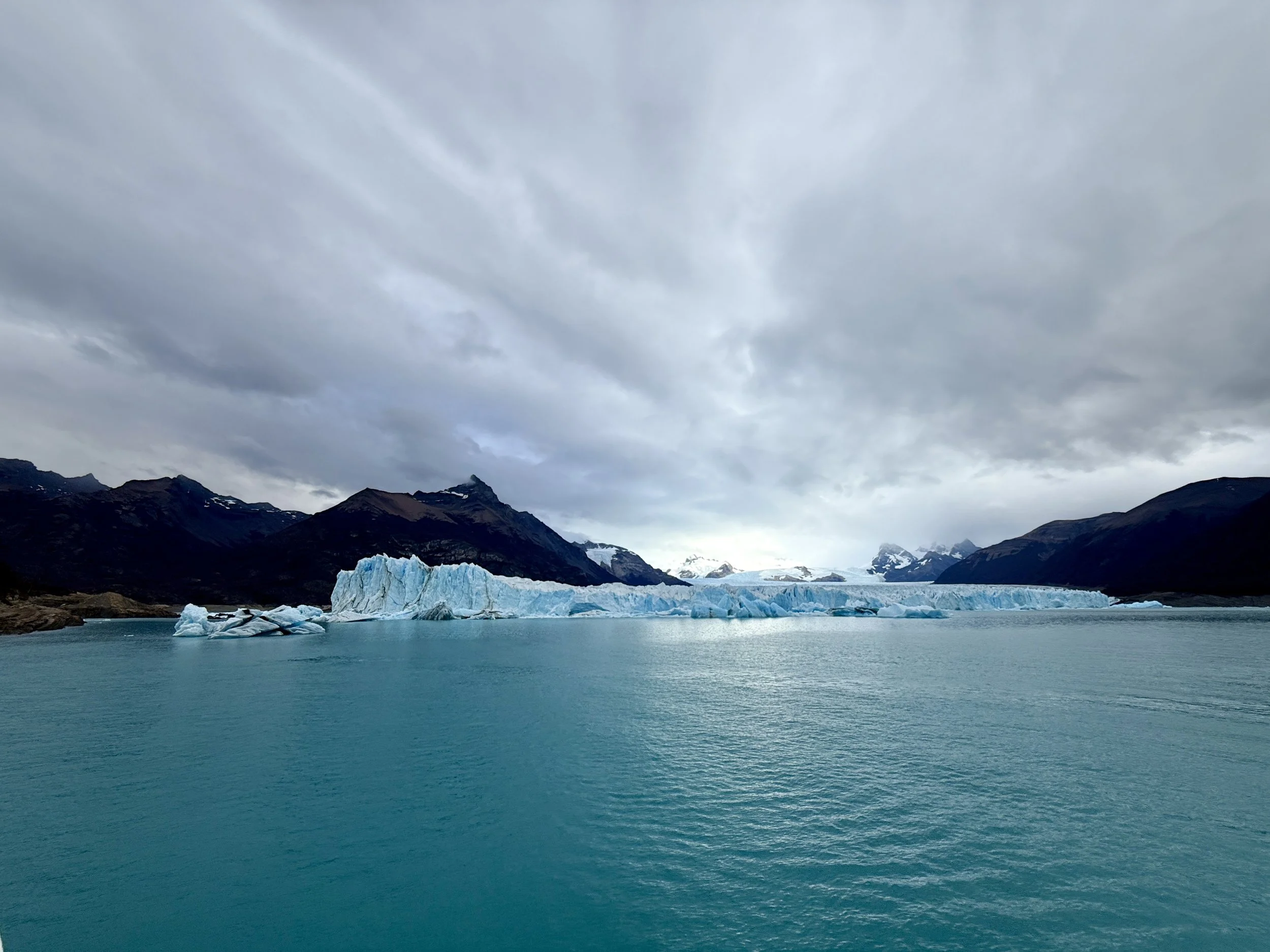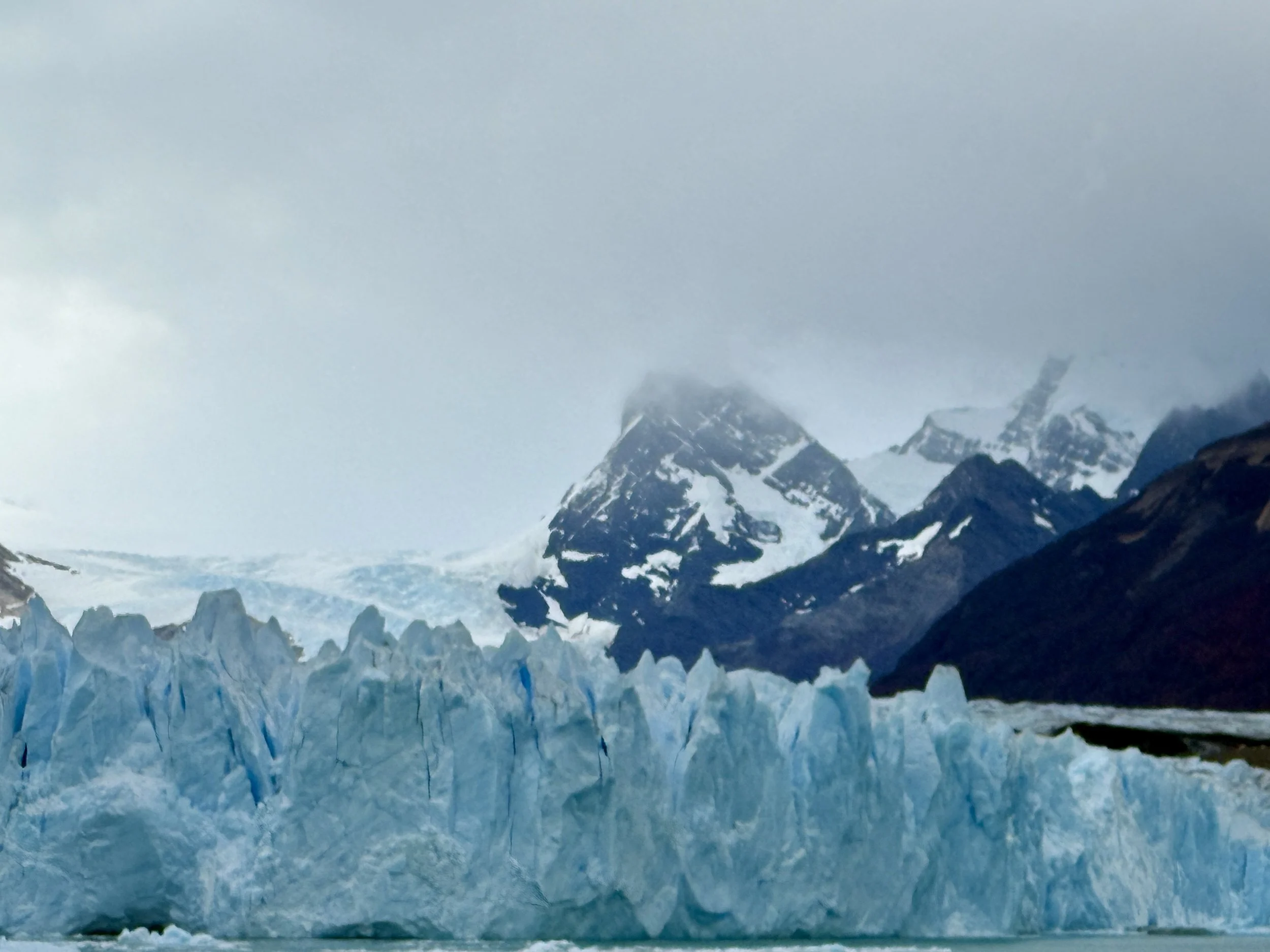El Calafate, Patagonia, Argentina
Glaciares up to here!
At the bus station in El Chalten, between throwing our bags in the belly of the bus and taking our seats, we were shaken down for ARG$ 2,000 pesos for what they called a “terminal del omnibus” fee. A local woman traveling on the same bus helped the girl tasked with this unenviable job translate for us, and even she poo-pooed this fee which she said was stupid and no one in town liked. We went with the flow and the one thing we got from it was change for a USD $10 bill in Argentinian pesos, whose 1,000 denomination involved different individuals. When we exclaimed in surprise at the novelty of this fact, the woman laughed satirically saying, “Yes, we have different faces in our little useless pieces of paper…” Argentinian inflation made people laugh or cry, it seemed.
***
We arrived in El Calafate, surprised by the size of the town — bigger than El Chalten — and hopeful that the more modern and trendy looking restaurants would serve something other than meat.
Alas, after settling in the hotel and dropping off our laundry, the restaurant closeby served nothing much different from what our choices had been. Food here in Patagonia — whether Chilean or Argentinian — has been meat- and carb-based, heavy and greasy and tasteless. If one is lucky, the only veggies usually available come in the form of salads comprised of carrots and cabbage — long shelf veggies — along with tomatoes and a couple of pieces of lettuce, which were strangely called “arugula” in restaurant menus.
***
We woke up early, had a hotel breakfast that comprised of super sweet yogurt with granola, fake OJ and coffee, and were picked up by the tour group bus for our activity for the day.
The bus quickly rounded up more tourists; we were soon on the highway out of Calafate. L. the tour guide shared facts and info about the Patagonian Ice Field — the largest after Antarctica and Greenland — about the general environment, climate and flora and fauna of the area, and about the Perito Moreno Glacier. She quizzed the crowd for why this particular glacier was special. I responded confidently that it was one of the few in the world that was growing — because that was what I had read. Wrong! This glacier had been stable until 2020, when it began to recede. (What is the whole town of Calafate supposed to do then?!?). The reason it was special was that it was one of the few in the world that was accessible by land, instead of requiring long hikes or boat rides. Poor glacier.
Surprisingly the 1.5 hour ride went by quickly — the Patagonian steppe outside the bus’ windows was wide and deserted and beautiful in that desolate, harsh way. I remained skeptical when she mentioned the animals of the area — birds, guanacos, pumas — since we have barely seen any shadows thereof. The bus dropped us off at the top of the Magallanes peninsula, by the snack bar and the top of the walkways circuit.
(Also I was mesmerized by the way that the guide and the driver kept passing a mate back and forth between them, with her refilling it from a thermos of hot water. For the record, they did this all the there AND back — by which time I was given to believe that Argentinians had serious cases of oral fixation and extra large bladders. Along the walkways, one could tell who the Argentines were by the thermoses they carried. And in front of the public bathroom, there was a hot water filler for refill. As far as I know, the yerba has caffeine, which I assume helps people stay awake and productive, but it’s my contention that that productiveness is cancelled out by the constant need for awareness to one’s mate and need to reach out for a thermos to refill it.)
Parque Nacional Los Glaciares (foreigner entry fee ARG$45,000 pax) had done a great job of putting in metal walkways that made enjoying the glacier easy. These walkways with broad balconies were spread over the peninsula, but we focused on the areas that faced the glacier (Senderos red, yellow and blue).
The glacier was blue and massive and alive. Regularly it would grind, crack, and then break and calve with a boom much louder than one would expect. The guide mentioned that the calving happened first and then the noise — which was indeed a curious thing to see.
Walking up and down the walkways circuit allowed us to see the front of the glacier from many angles and later, when the sun finally peeked from behind the clouds, we marveled at the different hues of blues — the icy blue of the glacier, the turquoise of Lago Argentino, the bright blue of the skies. And all of this against the autumn reds along the side of the mountain behind the lake.
When the bus finally arrived to take us back to town, N. used his charm on the young bus driver to finagle a seat in the front row so he could take pictures. He offered weak resistance — something about his hot thermos for his yerba mate being a possible hazard — but no one can resist N.’s grin.
***
A miracle!
We got off the bus before our stop so N. could take photos of the weirdly tall yellow leafed bushes that seemed to have been planted in abundance around town. So it was that walking towards our hotel we spotted a Korean flag and signs that advertised a “mercado coreano”. My app had pictures of instant cup ramen, and my only thought had been to buy some for that familiar spicy salty taste. Then, we spied a sign that said “restaurante coreano.” Say no more.
We passed through the door, found ourselves in a pretty courtyard decorated with roses and fancy picnic tables enclosed with clear wind-protector panels and heaters. We were still incredulous as we ordered a bibimbap, yukgaejang, soju and beer.
Granted the “kimchi” was just lightly salted cabbage leaves spiced with gochugaru, and the banchan were just boiled eggs, eggplant and broccoli, but the main dishes tasted close enough to the real things, enough to make us forget Patagonia cuisine. (The restaurant was created by an enterprising Korean owner and catered to large Korean tour groups that came to Patagonia.)
We stopped by the little shop next door and stocked up on Maxim coffee, Shin cup ramen, and snacks.
***
One could be forgiven for thinking that N. might be a morning person: today we had to get up at 6 am to get ready for the day. A tour bus picked us up and soon enough, we were out of El Calafate. We were greeted at Puerto Bandera by a beautiful sunrise and our catamaran.
Because the guide on the bus had emphasized that we were to share tables on the boat, we hopped on and glided into the first table we saw, already occupied — we later learned — by Ana from Malaga, Spain, who was working in Buenos Aires for three months and using the weekends to travel. (From El Calafate, she had gone yesterday on a day trip to Torres Del Paine, to a few miradors; no time for hiking on that schedule.)
The plan for today was to hopscotch around a few arms of Lago Argentino and visit glaciers.
First stop: Glaciar Seco, so called because the edge of the glacier did not touch the lake at all. These types of glaciers seemed suspended at the side of the mountain, simply melting rivulets that soon enough end up in the lake.
On this section of the boat ride, the most striking was the color of the water — deep blue, brilliant turquoise blue, more striking in contrast to the gray/brown rocky mountainsides.
Our next glacier was Spegazzini, massive but stable, so the catamaran was able to approach fairly closely so all of us could get a good look.
We made a quick stop at Puesto las Vacas (within Parque Nacional Los Glaciares), a spot where the whole group was directed to follow the guides within the demarcated trail, in such a way that we all looked like condemned prisoners being led to the gallows. By a small cabin, the guide proceeded to tell us the grim history of this spot: the area had never been settled by the natives who stuck instead to the Patagonian steppe; it was settled by arriving Europeans who brought cattle, which were abandoned when life in the Patagonian forests proved too harsh for humans. So now the cattle had become feral. Supposedly there were approximately 6,000 cattle in these hills, causing a lot of damage as they grazed on land not adapted to grazing. A Scandinavian researcher had spent six years in the cabin, trying to control the population, without success. And now, here we were. On that depressing note, we skipped rocks on the shore and got back on the catamaran.
Our next glacier was Upsala, billed as South America’s largest glacier, but also unstable so the boat was not allowed to approach it — we all had to admire it from afar. Still, because it was unstable, there were gigantic iceberg hunks that were floating in the water.
We also reached the north face of the Perito Moreno Glacier. But even before we reached it, I was glaciered out.
Adios, Calafate!
***
